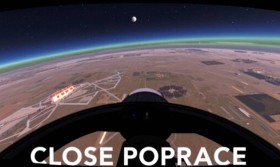Title: The Heart's Haptic: Inside Generosity Overload's VR Expansion
The virtual reality landscape is often a gallery of power fantasies. We scale mountains, fire plasma rifles, and drive hypercars at impossible speeds. But a quiet, profound revolution is brewing in a corner of the meta-verse, pioneered by the unlikely hit, Generosity Overload Shelter Sign Installer Simulator VR. The game’s latest expansion, Place Missions, doesn’t just add new content; it fundamentally redefines the emotional grammar of interactive media, transforming mundane acts of service into a deeply resonant, haptic poetry of human connection.
At its core, the base game was an exercise in mindful immersion. Players assumed the role of a volunteer for the fictional "Generosity Overload" network, tasked with installing illuminated signage for homeless shelters, community kitchens, and crisis centers. The genius was in its tactile detail: the weight of the aluminum alloy sign in your virtual hand, the satisfying click of the spirit level, the low hum of the electric drill sending subtle vibrations through the VR controllers. It was a meditative, purposeful loop that eschewed points and high scores for the quiet satisfaction of a job done well—a job that, in the game's narrative, would guide someone in need to safety and warmth.
The Place Missions expansion elevates this concept from a solitary act of installation to a rich, narrative-driven ecosystem of empathy. The expansion’s title is a clever double entendre: you are literally placing signs in new, more complex environments, but you are also undertaking a mission of place-making—transforming anonymous, often hostile urban spaces into beacons of hope and community.
Gone are the straightforward alleyways and clear facades of the base game. Place Missions introduces a series of dynamic, challenging environments that mirror the complexities of real-world urban aid. One mission might see you navigating a dense, rain-slicked downtown at night, your headlamp cutting through the gloom as you seek the correct fire escape to mount a discreet sign for a shelter operating on a higher floor. The sound design is impeccable; the distant wail of sirens and the patter of rain on your virtual hood create an atmosphere of lonely urgency, making the warm glow of the installed sign feel like a monumental victory against the indifference of the city.
Another mission type involves "Community Collaboration." Here, the VR headset becomes a window into a fragile ecosystem. Before you can install a permanent sign for a soup kitchen, you must first gain the trust of the local community. This is achieved through a series of subtle, non-verbal interactions. Using your controllers, you help a vendor arrange crates of produce, you return a stray item to a person living on the street, or you simply sit on a virtual park bench and listen to an NPC’s story. These interactions aren’t governed by dialogue trees but by physics and presence. The haptic feedback—a gentle pulse when you make meaningful eye contact, a soft vibration as you hand over a retrieved object—becomes the language of trust. Only when the community’s ambient suspicion meter, represented by subtle audio and visual cues, lowers are you permitted to complete your installation. This mechanic brilliantly simulates the real-world truth that aid is not just about providing resources, but about building respect and understanding.
The most emotionally potent addition is the "Echo" system. After installing a sign, you can optionally activate a temporal echo—a ghostly, non-interactive glimpse into the near future. You see a figure, shrouded in the low-polygon style of the game, trudging through the same rain you just endured. They pause, look up, and their posture shifts from defeat to relief as they spot the sign you just mounted. They turn and walk toward the shelter’s door. There is no reward screen, no XP pop-up. The reward is this silent, poignant vignette—a direct, visceral connection between your meticulous, physical labor and its human consequence. It’s a masterclass in procedural storytelling, where the player’s actions generate a unique, powerful emotional payoff every time.
Technically, the expansion leverages VR’s potential to its fullest. The physics engine for mounting signs has been refined, with new variables like wind resistance on high-rise buildings and the need to clear away grime or old posters before an installation. The weight and balance of new tools, like a compact impact driver or a longer-reach ladder, feel distinct and authentic. This isn’t just busywork; it’s a deliberate design choice to make the act feel consequential. The care you must take translates directly into the value you perceive in the outcome.

Generosity Overload: Place Missions is more than an expansion; it is a manifesto. It argues that the true potential of VR lies not in escapism, but in deep, empathetic engagement. It finds profound drama not in conflict, but in construction; not in acquisition, but in giving. By focusing on the haptic, physical poetry of charitable action and weaving it into a narrative of community and consequence, it forges a new genre: the empathy simulator. In a world often numbed by headlines about suffering, this game offers something radical and vital: not just the fantasy of being a hero, but the deeply human, beautifully mundane satisfaction of being a helpful pair of hands.
Tags: #VRGaming #EmpathySimulator #GenerosityOverload #VirtualReality #GamingForGood #PlaceMissions #IndieGame #HapticFeedback #SimulatorGames #GamesWithPurpose


















